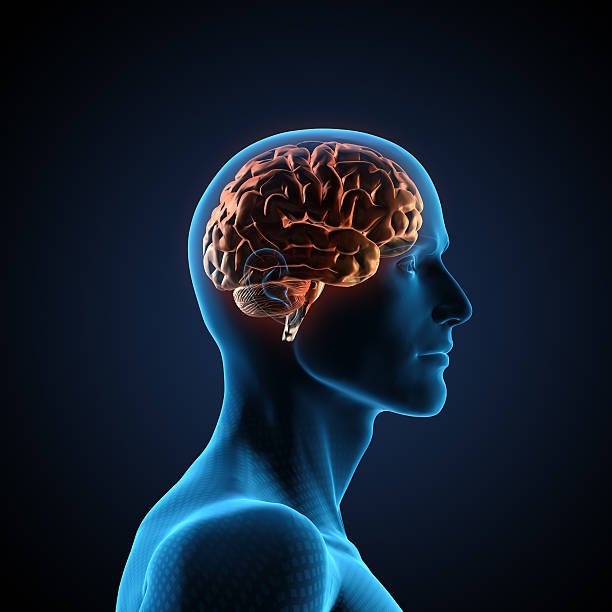Memory is one of the most critical functions of the human brain, influencing behavior, learning, and overall cognitive abilities. At its core, memory is a complex physiological process involving different brain regions, neuronal networks, and biochemical changes. Understanding the physiology of memory requires looking at how the brain encodes, stores, and retrieves information. In this article, we will explore the various physiological underpinnings of memory, including its types, relevant brain structures, neurotransmitters, and synaptic plasticity.
1. Types of Memory and Their Physiological Basis
Memory is typically categorized into different types, each with distinct physiological foundations. The three main types are sensory memory, short-term (or working) memory, and long-term memory.
1.1 Sensory Memory
Sensory memory is the shortest-lived form of memory, lasting just milliseconds. It involves the brief storage of sensory stimuli, like visual or auditory information, before it either fades away or is processed further into short-term memory. The physiology of memory at this level occurs in the primary sensory cortices of the brain—such as the occipital lobe for visual information and the temporal lobe for auditory information. These areas temporarily hold the incoming data before passing it to higher cognitive centers for processing.
1.2 Short-term Memory
Short-term memory (STM) involves the temporary retention of information, usually for seconds or minutes. Its physiological basis largely involves the prefrontal cortex, which is responsible for attention and conscious processing of information. Additionally, the neurotransmitter dopamine plays a crucial role in maintaining information in working memory by modulating the activity of neurons in the prefrontal cortex.
1.3 Long-term Memory
Long-term memory (LTM) refers to the storage of information for extended periods, ranging from hours to an entire lifetime. Unlike STM, long-term memories are stored in multiple brain regions, depending on the type of memory.
- Declarative Memory: Also known as explicit memory, declarative memory includes facts and events that can be consciously recalled. Its physiological basis mainly involves the hippocampus, a critical structure in the medial temporal lobe, which plays a pivotal role in the consolidation of memories.
- Procedural Memory: Procedural memory is a type of implicit memory that involves skills, habits, and tasks. This type of memory relies heavily on the basal ganglia and cerebellum. For instance, learning to ride a bike involves motor learning that is stored in these brain regions.
2. Key Brain Structures in the Physiology of Memory
Several brain structures work in harmony to facilitate memory formation, consolidation, and retrieval. Each structure plays a unique role in the physiology of memory, forming networks that enable us to store and access different types of information.
2.1 Hippocampus
The hippocampus is perhaps the most well-known brain structure associated with memory, particularly declarative memory. It is critically involved in the formation and consolidation of new long-term memories. The process by which short-term memories are transformed into long-term memories is known as consolidation, and the hippocampus serves as a temporary storage site during this transition.
Notably, damage to the hippocampus can result in amnesia, where individuals lose the ability to form new memories while still retaining older ones.
2.2 Amygdala
The amygdala is closely tied to emotional memory. It plays a crucial role in modulating the strength of memory formation based on emotional experiences. When an event is emotionally charged, the amygdala interacts with the hippocampus and other brain regions to enhance memory encoding. For example, highly emotional events, like a traumatic incident, are often vividly remembered because of the strong activation of the amygdala.
2.3 Prefrontal Cortex
The prefrontal cortex is heavily involved in working memory and attention. It helps hold information temporarily while we perform cognitive tasks such as reasoning, problem-solving, and decision-making. In addition to its role in short-term memory, the prefrontal cortex also plays a role in retrieving long-term memories stored elsewhere in the brain.
2.4 Cerebellum
While the cerebellum is traditionally associated with motor coordination, it also plays a role in procedural memory, particularly when it comes to tasks that require motor learning. The cerebellum works with the basal ganglia to help automate routine tasks like riding a bike or typing on a keyboard.
3. Neurotransmitters and the Physiology of Memory
Neurotransmitters are chemical messengers that play an essential role in modulating neuronal communication. Several key neurotransmitters are involved in the physiology of memory, influencing how neurons transmit, store, and retrieve information.
3.1 Acetylcholine
Acetylcholine is one of the primary neurotransmitters associated with memory, particularly in the hippocampus. It plays a crucial role in learning and the consolidation of long-term memories. A deficiency in acetylcholine levels is a hallmark of neurodegenerative diseases like Alzheimer’s disease, which is characterized by severe memory impairment.
3.2 Glutamate
Glutamate is the brain’s primary excitatory neurotransmitter, and it plays a pivotal role in synaptic plasticity, which is the ability of synapses to strengthen or weaken over time. Synaptic plasticity, especially long-term potentiation (LTP), is believed to be the cellular mechanism underlying learning and memory. LTP involves an increase in synaptic strength between two neurons, making it easier for them to communicate in the future, thus solidifying the memory trace.
3.3 Dopamine
Dopamine is closely linked with reward-based learning and memory. It helps regulate attention and motivation, both of which are important for memory encoding. The prefrontal cortex and basal ganglia are key areas where dopamine plays a role in the physiology of memory. Dopamine’s role in memory is most evident in tasks requiring working memory, where it enhances the signal of relevant information and suppresses distracting information.
3.4 Norepinephrine
Norepinephrine is involved in arousal and alertness, and it plays a significant role in emotional memory. The release of norepinephrine during stressful or emotionally intense events enhances memory encoding. This neurotransmitter interacts with the amygdala and hippocampus to modulate the strength of emotional memories, explaining why people often remember emotionally charged events more vividly.
4. Synaptic Plasticity and the Physiology of Memory
A fundamental concept in the physiology of memory is synaptic plasticity, which refers to the ability of synapses to change their strength in response to activity. Synaptic plasticity is essential for learning and memory, as it allows the brain to adapt to new information and experiences.
4.1 Long-Term Potentiation (LTP)
Long-term potentiation (LTP) is a key process underlying memory formation at the synaptic level. LTP refers to a long-lasting increase in the strength of synaptic connections, usually as a result of repeated stimulation. This phenomenon occurs primarily in the hippocampus and is crucial for the consolidation of memories.
LTP involves the activation of glutamate receptors, specifically NMDA receptors, which trigger a cascade of intracellular events that result in the strengthening of the synapse. Once LTP has been established, it becomes easier for the neurons involved to communicate, reinforcing the memory.
4.2 Long-Term Depression (LTD)
Conversely, long-term depression (LTD) refers to the weakening of synaptic connections, which also plays a role in memory and learning. LTD is believed to be involved in the process of forgetting or modifying memories that are no longer relevant. Like LTP, LTD occurs through changes in glutamate receptor activity and is essential for maintaining the balance between memory storage and flexibility.
4.3 Neurogenesis
Another important aspect of the physiology of memory is neurogenesis, the process by which new neurons are generated. This phenomenon occurs mainly in the hippocampus, where new neurons are continuously formed throughout adulthood. These new neurons are believed to contribute to memory formation and learning, particularly by integrating into existing neural circuits and enhancing the brain’s ability to encode and retrieve information.
5. The Role of Sleep in Memory Consolidation
The physiological process of memory is not limited to active wakefulness; sleep plays a critical role in memory consolidation. During sleep, particularly during deep sleep (slow-wave sleep) and REM (rapid eye movement) sleep, the brain undergoes various physiological changes that facilitate the strengthening and organization of memories.
5.1 Slow-Wave Sleep (SWS)
Slow-wave sleep (SWS) is characterized by slow, synchronized brain activity and is associated with the consolidation of declarative memories. During SWS, the hippocampus replays the events of the day, transferring information to the neocortex for long-term storage. This replay is believed to be essential for solidifying memories, particularly those related to facts and experiences.
5.2 REM Sleep
REM sleep, on the other hand, is associated with the consolidation of procedural and emotional memories. The heightened brain activity during REM sleep helps integrate newly acquired skills and emotionally charged experiences into long-term memory networks. The amygdala and hippocampus are particularly active during REM sleep, highlighting their role in processing emotional and experiential memories.
6. Memory Disorders and Their Physiological Basis
Memory disorders often arise from disruptions in the physiology of memory, affecting the brain structures and neurotransmitters involved in memory processing.
6.1 Alzheimer’s Disease
Alzheimer’s disease is a neurodegenerative disorder that leads to severe memory impairment. Its physiological basis involves the degeneration of neurons in the hippocampus and the accumulation of amyloid-beta plaques and tau tangles. These pathological changes interfere with the normal functioning of acetylcholine and glutamate, leading to the loss of synaptic connections and memory decline.
6.2 Amnesia
Amnesia is a condition characterized by the loss of memory, which can occur due to trauma, stroke, or neurodegenerative diseases. Damage to the hippocampus or surrounding regions often results in an inability to form new memories (anterograde amnesia) or recall past events (retrograde amnesia). The physiological basis of amnesia involves disrupted synaptic plasticity and impaired communication between memory-related brain regions.
Conclusion
The physiology of memory is an intricate process that involves multiple brain structures, neurotransmitters, and cellular mechanisms. From the hippocampus’s role in consolidating memories to the neurotransmitters like glutamate and acetylcholine that facilitate synaptic plasticity, the physiological basis of memory is fundamental to understanding how we learn, retain, and retrieve information. Ongoing research continues to uncover new aspects of this complex process, offering deeper insights into memory disorders and potential therapeutic strategies to combat them.
click Here to visit the website






